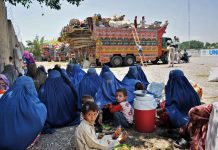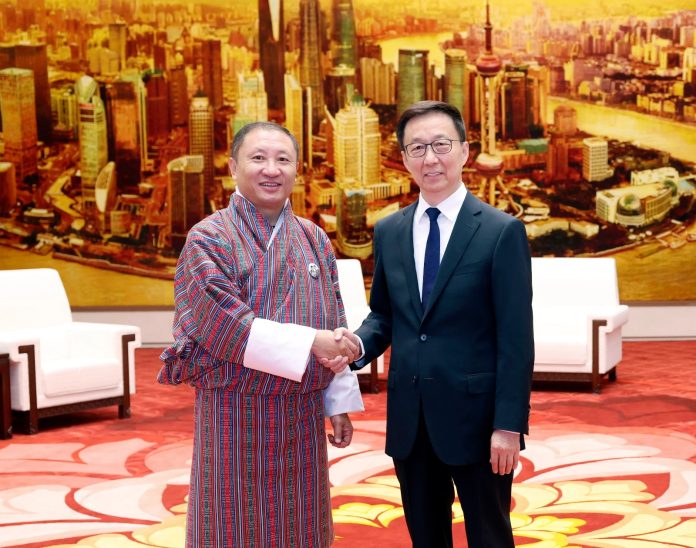In a remote village in the Himalayas, inside a border zone that has long been disputed by China and Bhutan, 18 new Chinese residents stood waiting to enter their newly built homes.
Each carried a freshly framed portrait of China’s President Xi Jinping – large enough to leave only their heads and lower legs exposed – while behind them a bright red banner welcomed them in Chinese and Tibetan script.
It was December 28 and they were the first batch of people – made up of 38 households from the Tibetan city of Shigatse – to move in to the newly expanded Tamalung village, the Tibet Federation of Industry and Commerce said on WeChat.
The village is one of at least three built by China inside the disputed zone. Local governments in the Tibet autonomous region led a rapid expansion of border villages last year, with Tamalung doubling in size in the latter half of 2023.
Satellite imagery – taken by US-based Maxar Technologies seven days before the residents moved in – shows 147 new houses.
Local media reports said the village expansion was designed to accommodate 235 households, in addition to the 200 people who were living there in just 70 homes at the end of 2022.
The villages were part of China’s state-led poverty alleviation scheme to provide better living conditions but they doubled as “citadels” to strengthen national security, officials have said.
Lhozhag county – which administers Tamalung – spent an estimated 26 million yuan (US$3.6 million) on infrastructure for the village, according to its 2023 funding report on poverty alleviation.
The allocation funded the reinforcement of the bank of a stream, two bridges and paved roads. Satellite imagery shows the works were completed within six months.
Bhutan’s capital Thimphu has so far downplayed the controversy posed by these villages, but its closest partner India is keeping a close eye on developments in the disputed border area of around 495 sq km (191 square miles).
To the east of Tamalung, another border village, Gyalaphug, also doubled in size last year after around 16 sq km (10 square miles) was razed to make way for more than 150 houses.
Satellite imagery shows the new homes sitting next to an existing four rows of dwellings and a Communist Party community centre with a small library and other amenities.
According to Chinese state media, Gyalaphug was established in 2007 with just two homes and no water or electricity. It was developed into a model village from 2016-18 as part of Xi’s “moderate prosperity” poverty alleviation campaign.
Party mouthpiece People’s Daily reported that more than 620 “border moderate prosperity villages” were established by the end of 2021, Xi’s deadline for the party’s centenary goal to alleviate poverty in the country.
Local officials and state media have described the dual function of the villages – to provide modern housing and defend the border – as coming from the very top of the party.
Lhozhag county party secretary Zhao Tianwu told his officials in 2020 that “moderate prosperity villages” in the border areas needed to be promoted as a show of special care by the party leadership.
He also said Xi’s ideology about border governance and “stabilising Tibet” was the crux of the village policy. Xi raised Tibet’s national security role in 2013, at his first parliamentary session as party chief.
Construction tender documents show that Lhozhag county’s development and reform commission tendered much of the roads and housing works in the disputed border zone.
These included a 22km (14 miles) paved road linking the two villages in the mountainous region. Dozens of other houses were also built along the road, none of which could be attributed to any village in the Chinese government’s official list of administrative divisions.
Some of the projects were funded by other provincial governments and state-owned enterprises under the central government, including the China National Cereals, Oils and Foodstuffs Corporation, through their aid funds for Tibet.
According to Lhozhag county’s 2020 annual report, the company invested 20 million yuan (US$2.7 million) to build border villages and health facilities, while Hubei province in central China tipped in 28 million yuan (US$3.9 million).
Last year, Tibet authorities offered up to 12,800 yuan (US$1,780) as an incentive to residents in other parts of the region to resettle in the border area, according to budget papers.
The Shannan city government, which administers Lhozhag county, has also said it will establish a trial scheme of “professional border residents” to increase the size of the defence force and speed up the “deep cooperation between the military and civilians”.
State media reports said that immigration police and village leaders already patrolled the borders, often carrying Chinese flags and spraying words and images – including the characters for “China” and the national flag – on rocks and tree trunks.
In its 2023 annual report, Lhozhag county stressed the need for cooperation “between the party, the government, the police and civilians to secure the border, strengthen frontline patrols and make sure that no one can get in and no one can get out”.
Bhutan and China do not have formal relations, but have been in boundary talks since 1984, achieving partial progress over the years on some of their territorial disagreements. In 1998, they agreed to avoid unilateral change to the boundary’s status quo.
Negotiations speeded up after China’s post-pandemic reopening, with Bhutanese and Chinese officials establishing a joint technical team to mark out the border at their 13th expert group meeting in Beijing last August.
And in October, the two countries’ foreign ministries held their 25th round of official border talks, seven years after they last convened in 2016.
Last March, then prime minister Lotay Tshering told Belgian newspaper La Libre that the villages were not built on Bhutanese soil and his government decided not to “make a big deal” out of them.
Tshering said China and Bhutan were nearing the end of their “three-step road map” to resolve the dispute – from marking the border on paper, through visiting the demarcated area, to formally declaring the agreed boundary.
Tshering lost his seat in the country’s January election but his successor Tshering Tobgay is unlikely to drastically change Bhutan’s stance, according to research fellow Amit Ranjan.
“Bhutan is not going to do anything which harms Indian interests because it’s a small country. It is very close to India – politically very close, economically very close,” said Ranjan, from the National University of Singapore’s South Asian Studies Institute.
While Bhutan is dependent on India for trade and investments, New Delhi has not dictated Thimphu’s foreign policy since 2007, when both countries agreed to a more independent Bhutanese voice over its external affairs.
But New Delhi “has been very wary” about a possible border settlement and formal diplomatic ties between Beijing and Thimphu, according to an editorial by The Hindu newspaper in October.
Nitasha Kaul, an international relations professor who specialises in Bhutan from the University of Westminster, noted that Bhutanese diplomacy had always been quiet, patient and sensitive to the interests of its neighbours.
“It is also important to respect the Bhutanese position on their own interests, instead of ventriloquising on behalf of Bhutan as international media sometimes does,” she said.
While land swaps could not be ruled out in any negotiation, it was hard to speculate on specifics over the border issue, Kaul said, adding that entrenched India-China rivalry made the dispute’s resolution “existentially important” to Bhutan.
China’s foreign ministry did not respond when asked if it was consulted before the authorities in Tibet went ahead with the villages or whether their presence may be harmful to border negotiations. Its Bhutanese counterpart also did not respond to a request for comment.
But while officials continue to hold border talks, Lhozhag county has already announced plans in its 2023 annual report to further expand Gyalaphug and Tamalung villages into towns.









































